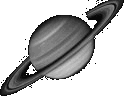|
Hi Yanniru,
my comments were about more than one subject. Only the latter part of my post was directed to the Scientific American August 2003 article specifically.
The notion of physics as a hologram projected by math inside math is related to extensive mapping of physics not published yet.
Math is based on counting. Count "two" and you have "difference" (this one, that one) and "same" (mixed up in generalisation perspective "2"). Count to "3" (or observe (interact with) "2") and you get a "triple" with more than one order of the ones possible; and with more than one assignment of the ones into pairs possible, and more than one projected assignment of ones with pairs possible.
Trying to fit your perspective:
The "2" perspective: you have more than one of these (so a "wave"); illuminate this by "coherent comparison" (see the "wave" as (1,2), (2,1) options to choose from; lit by another wave of (2,1)(1,2) ), and you get a 3-D object:
a particular direction (say (1,2) )seen from a choice of directions (1,2) or (2,1)?
The "light" has to be "coherent" so you can see the options against a shared background; by looking "with choice glasses on" you can see and choose a particular choice....?
I haven't tried to explain properly here; but note that when I use the word "hologram" I am using the word in a generalised sense; not talking about specific holograms as physics objects in the lab. I am talking about a hollow shell-structure generated by the effect of mathematics in mathematics.
The article does not appear to recognise that "Dirac strings" can be converted possibly to the simpler concept "number line"; that the entropy they speak of can be related to what I call "the boundary of a Zeno-sphere" (if you imagine the imaginary wall in mid-air that Zeno's arrow supposedly runs up against in the classic "Archer fires arrow at a wall" "paradox", as a projected limiting sphere).
At the limit the density of the concept "number say 50" increases; the number-line (or gravitational entropy: the back-and-forth mixing-zone within which a number "50" gets constructed locally) becomes smaller and smaller and more compactified.
At the "Zeno-limit" it becomes so dense as to share an error-margin with the concept (using "50" example) of "base 50"?
I found a way to transfer some patterns in the article into a fundamental analysis based on underlying investigation of the foundations of math and of physics.
By definition "counting something" makes it uncertain: as as soon as you reach the number "2": you have mixed up your ones (which is which?" surely (at least you COULD have mixed them up. Count some more and you "could have could have could have could have could have.....mixed them up!)
Suggestions welcome; I could have clarified the generalised way I was using the term "hologram"; I could have I suppose even said "hollow gram" and explained that idea!
Sorry this is a bit sloppy but I have a map of physics not yet posted which will explain a lot I think. Challenges to my logic most welcome.
From sincere debate can come new discoveries.
Regards,
Alan |



